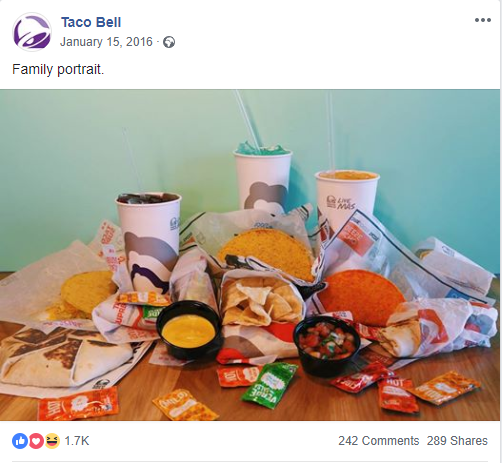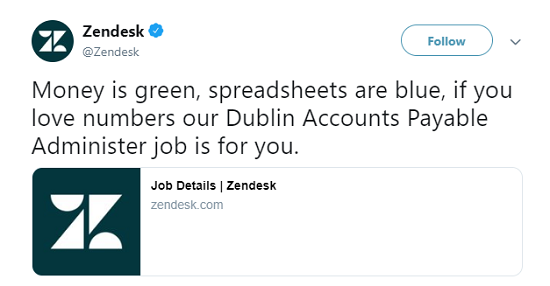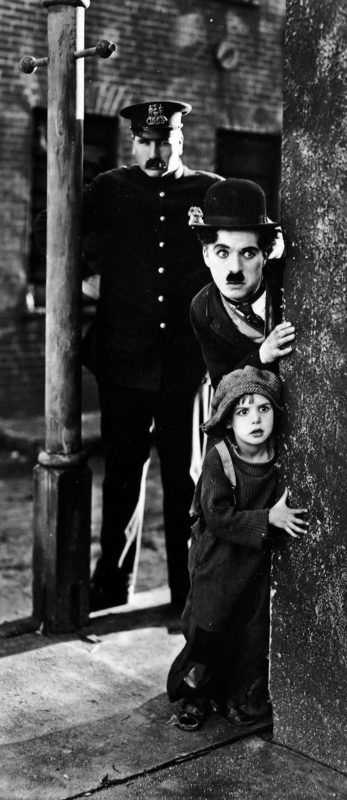Let’s bring tweet back in Twitter!
Twitter has been successfully provoking us to consciously think of language singe 2006. Originally restricted to 140 characters, it is an aphorisms-machine for witty remarks and social criticism, or at least it should be. Tweets still trigger our creativity in the use of language and prove that less is more, even though the number of characters doubled in 2017.
But what is the essence of a tweet?
According to the Oxford Dictionary, a tweet is:
- The chirp of a small or young bird
- A post made on the social media application Twitter
The correlation is obvious: tweets should be chirpy and melodic, just like a bird’s tweet. Still, one should not underestimate the power of language and the ways it may be (mis)used.
Tweets are often emotionally charged and provoke communication in return. This is because the language used on Twitter largely resembles speech. In fact, stuffing thoughts into 280 characters (or less) has resulted in new micro-messaging mechanisms that push language to its limits.
Twitter. Come for the epic meltdowns. Stay for your own.
— Nein. (@NeinQuarterly) April 29, 2018
Being spontaneous and creative with language is the first step towards creating engaging tweets. And equally important, never underestimate the reader.
Crafting “re-twittable” content
Crafting “re-twittable” content is an art in itself but it can be boiled down to providing something of value in a most unexpected and creative way. Most importantly, tweet at the moment. Twitter reflects life in real time and the best time to replicate experiences is to share them online simultaneously.
Like in the following lighthearted conversation between spouses:
I told my wife the water is too shallow. She said, wait ’til you get to know it better.
— Near/Miss (@ChrlesBernstein) January 31, 2014
The playfulness with language and good use of ambiguities in meaning is obvious. Also, notice the use of the short form of until in the second sentence. It saves characters and sounds more natural.
Always have in mind that people use social media networks to stay connected and informed but also to find entertaining content. Humour always works on social media because it adds a human touch and promotes open communication. Regardless if you are running a personal or a business profile, consider humor in your tweeting endeavours.
Have a look at the example below:
Existentialism: life is despair.
Absurdism: despair is meaningless.
Pessimism: they’re is no way out of despair.
Nihilism: it doesn’t even matter that we despair.
Capitalism: can u sell despair? asking for a friend.— Existential Comics (@existentialcoms) December 26, 2018
The tweet combines social criticism and humor in a minimalist framework. It sounds bittersweet but it provokes engagement because people can easily relate to the downside of capitalism. Plus, the repetition of the word ‘despair’ adds to its musicality and folly. And the ending is unpredictable.
The tweet has more than 11,000 interactions, suggesting that you do not have to crack the Twitter algorithm to create an engaging content that will become “re-twittable” and viral.
A piece of advice:
When tweeting, remember the 20 characters rule.
When a tweet is retweeted, the retweeter’s username is added at the beginning of the tweet. This adds some extra characters and if you already have +260 characters, it will be impossible to retweet. It is only possible if the user edits the original tweet, which is not something that any tweeter would like.
So keep in mind 20 characters as a magic number that will make sure your tweets are “re-twittable”.
If you can’t say anything nice¹
_____
¹Say it in a footnote.— Shit Academics Say (@AcademicsSay) January 11, 2019
In the end, be brave with language – Twitter is a solid soil for linguistic innovation and, as such, it offers endless linguistic opportunities.
Casual expression will remain to be the voice of communication on Twitter and the best way to retain its chirpy and creative nature is to take and make the most of the 280 characters you have at disposal.
Let’s bring tweet back in Twitter!
The Art of Humor in Marketing: Why marketers should not be afraid of humor
“Dying is easy. Comedy is hard.” ~ Edmund Kean
Laughter is considered to be one of the most engaging ways to stimulate connection between people. Yet in marketing, the power of humor is usually seen as a double-edged sword and marketers seem to be skeptic about using humor in their marketing endeavors.
Still, let’s have a look at some successful examples of humor used in marketing and elaborate on why the art of humor is important for building a memorable brand identity. The aim is to stimulate marketers to make and take the most of humor in their future campaigns.
But first, what makes something funny?
It is almost impossible not to begin with E. B. White’s famous quote: “Analyzing humor is like dissecting a frog. Few people are interested and the frog dies of it.”
Knowing that dissecting humor may actually kill the thing that is supposed to be funny, for the purpose of this article, let’s take a look at the obligatory elements that make something funny.
Here is the formula: imitate reality but add one of the following – ambiguity, a paradox, a contradiction, a misleading (or unexpected) ending and a surprise factor!
Be bold and be creative, for when it comes to humor – the possibilities are endless.
How is this applicable to marketing?
The best way to see is through examples. Let’s have a look at some examples from different channels: some social media posts, a few videos, and humorous job ads.
First: Taco Bell. Their “family portrait” is a perfect example of an unexpected connection between a text and its image which is where the humor comes from. The discrepancy between what is said and what is expected to be seen on the picture creates the humorous effect. And the almost passive-aggressive dot at the end of the text only adds to the intensity.

Next: Ikea. The renowned brand created special posters for the 2018 World Cup in which they matched their products with the football euphoria. By doing so, they engage with their customers much more easily because they used the hype for the event to promote their products.

The following example shows how humor can be used for recruiting purposes as well. Here is one from Zendesk. What did they do? Took a well-known song and made a variation of it. Here, the surprise factor is the key! It immediately grabs the readers’ attention and makes them get to the end as soon as possible. Plus, it rhymes, and thus it becomes more easily memorable.

Let’s continue with two marketing videos that have gone viral and send a message in a humorous and engaging way. Since videos have become the most engaging type of content, consider humorous videos that will keep customers curious and eager for more.
The first one is from Dollar Shave Club, a video that promotes $1 razors. The ad is filled with misleading and unexpected twists. It is dynamic and reaches its humorous effect through contradictions between what is being said and done. The video has over 25m views on YouTube.
If we let the numbers speak for themselves, the next video that has over 170m views clearly indicates that humor and marketing may be a match made in heaven. It is a song by Metro that aims to raise awareness for safety around trains. Not only it is memorable because it is rhythmic and colorful but it also uses humor to show how people can die in such absurd ways. And it is funny because it is absurd. The song was so successful that they launched a mobile game as well.
With everything being said, the real question is:
Why add humor to your marketing endeavors?
Humor will most definitely help you engage (with) your audience! It triggers positive emotions and helps you make your brand more easily memorable. It will make you more, let’s say, “followable”. Get your message across in a universal language – and laughter is the most universal of them all. You may be surprised by the amount of emotional response you can get.
So unleash your creativity and make ‘em laugh!
But before you do, there are a few questions you should always have an answer for.
Something to consider:
- Is my message clear and straightforward?
- Will humor get my message across?
- Is my target audience clearly defined?
- Will it cause frustration to those that will not get it?
- Is now the right timing?
- Will someone get offended?
If you can answer all of these questions, then you are on the right track!
And remember: A good humor comes naturally, so if it feels natural, it is right.

